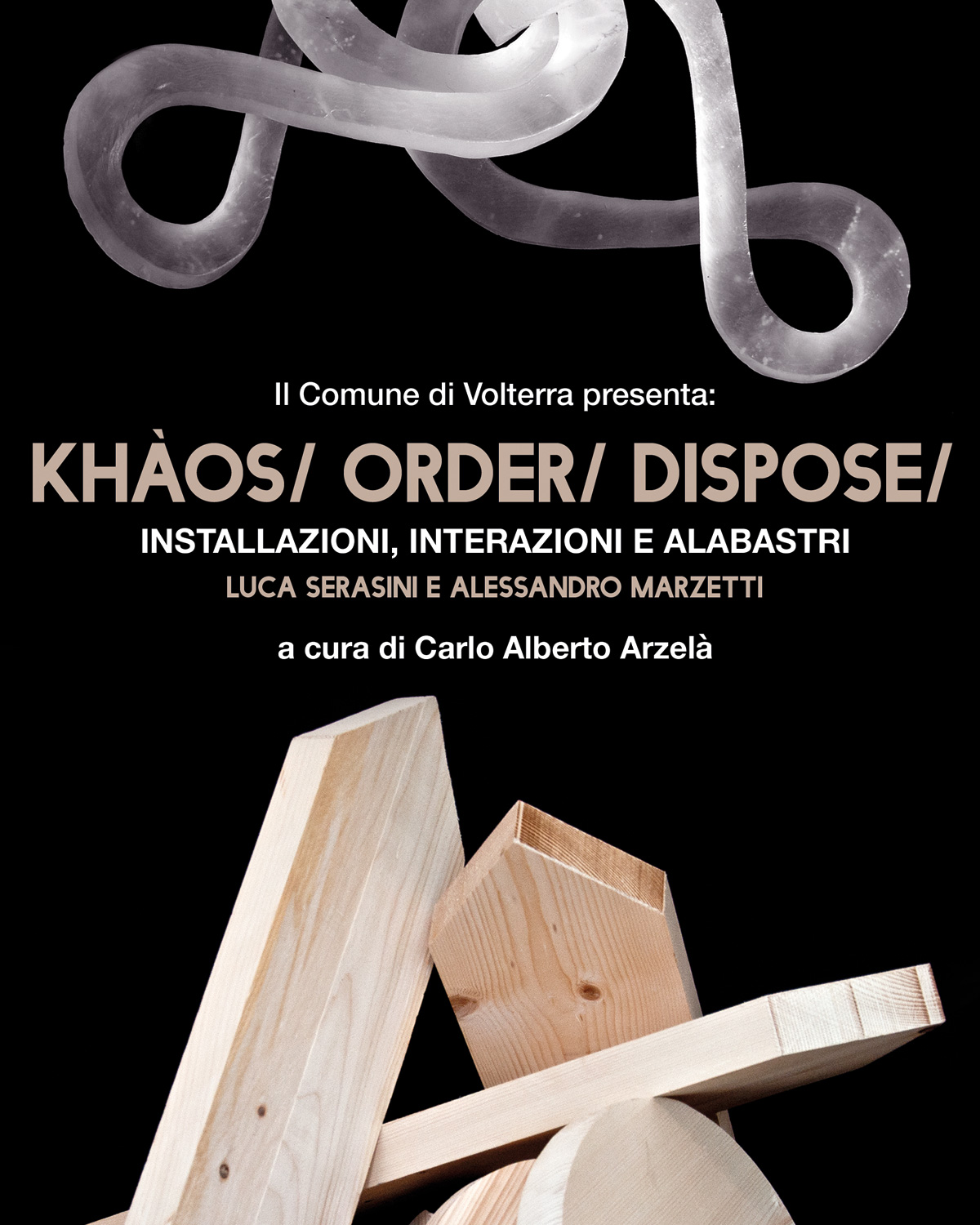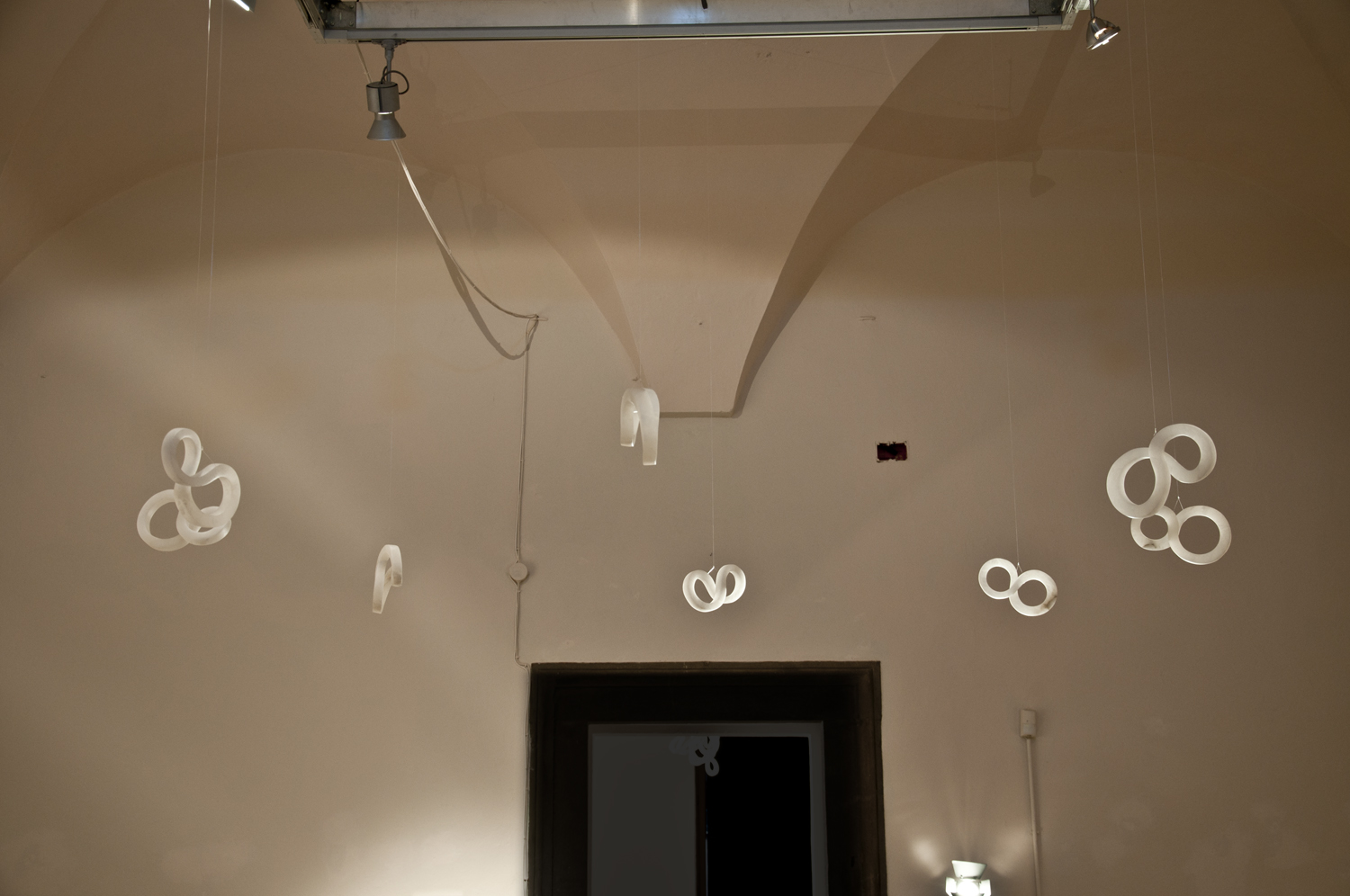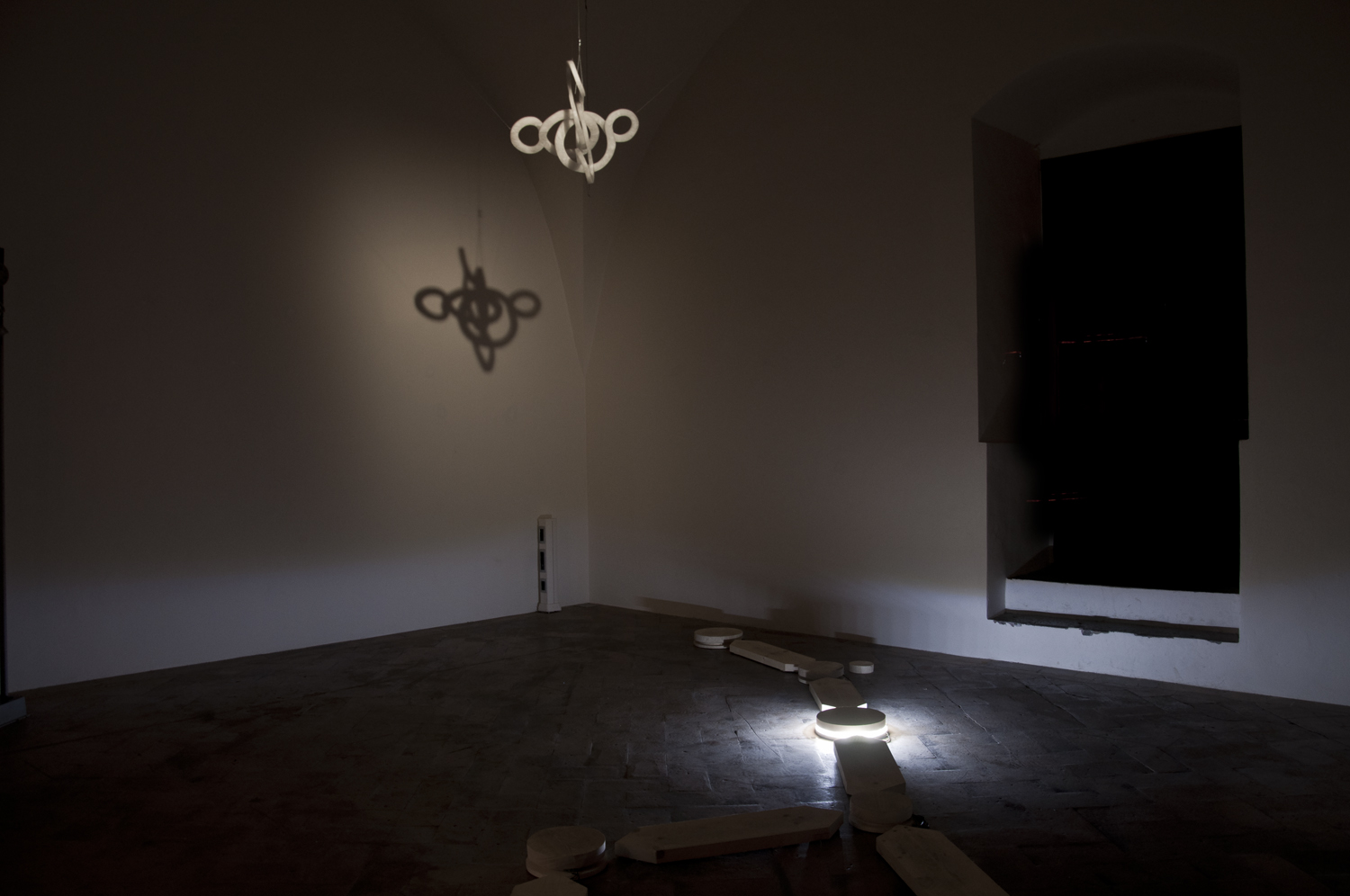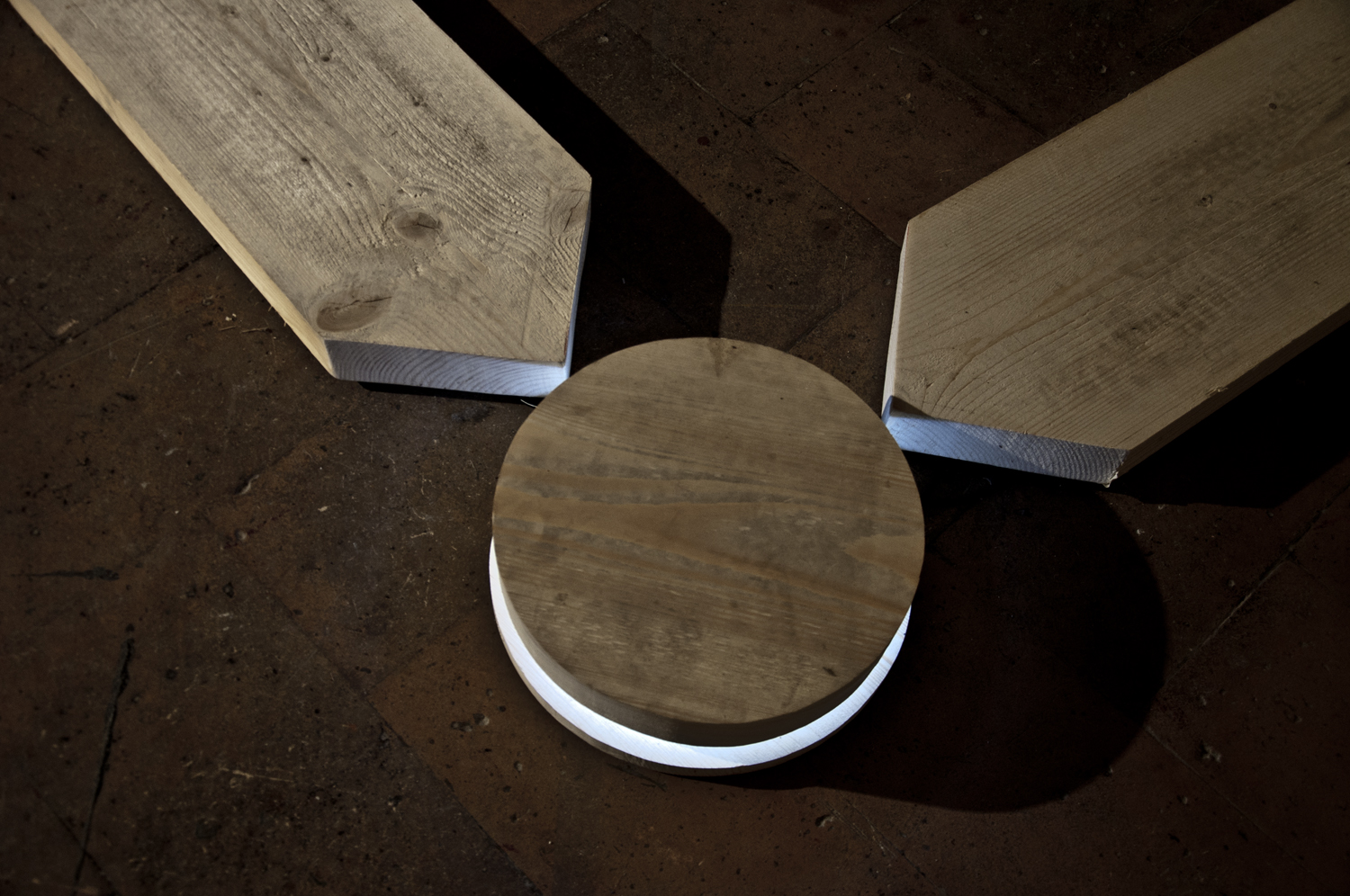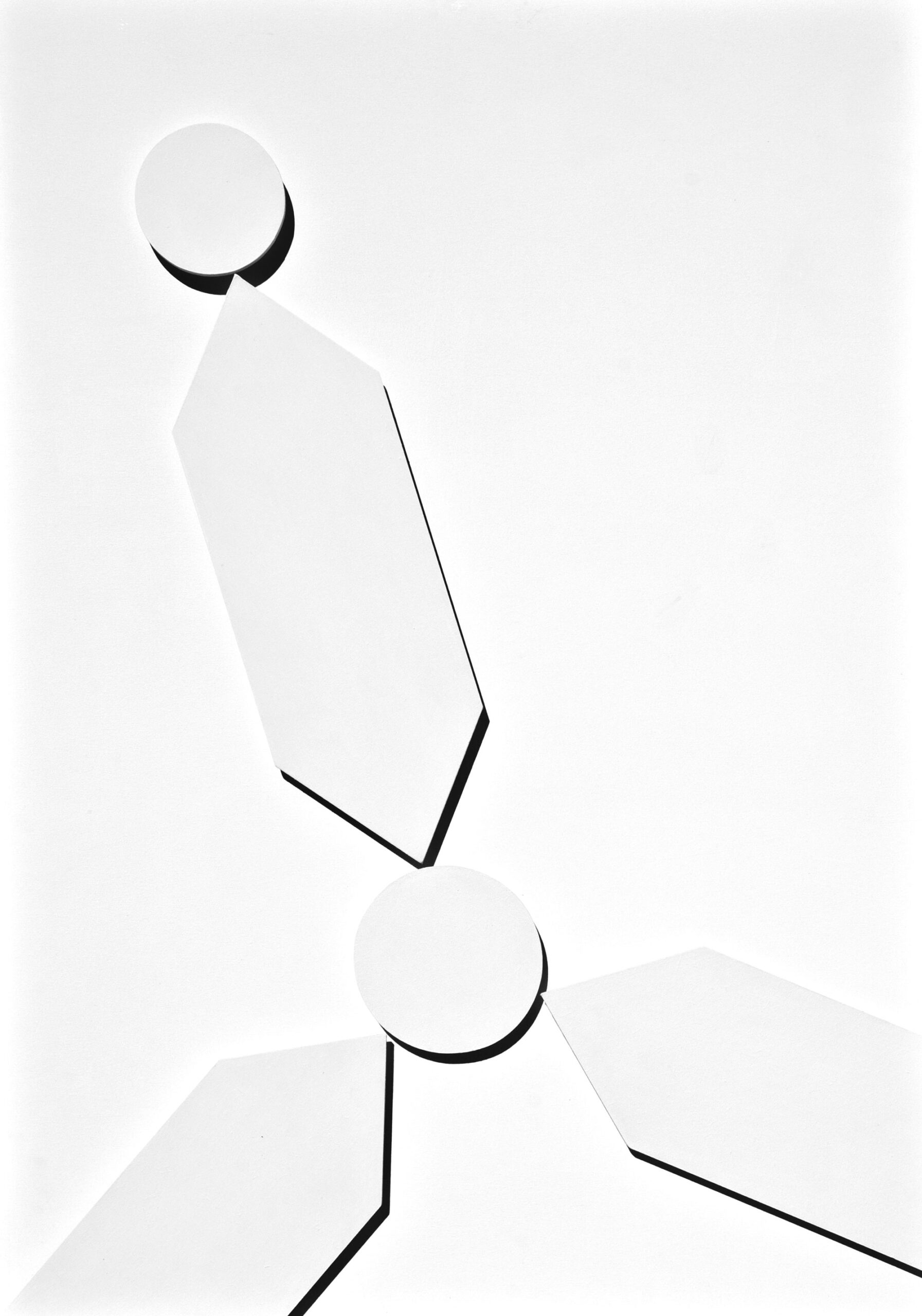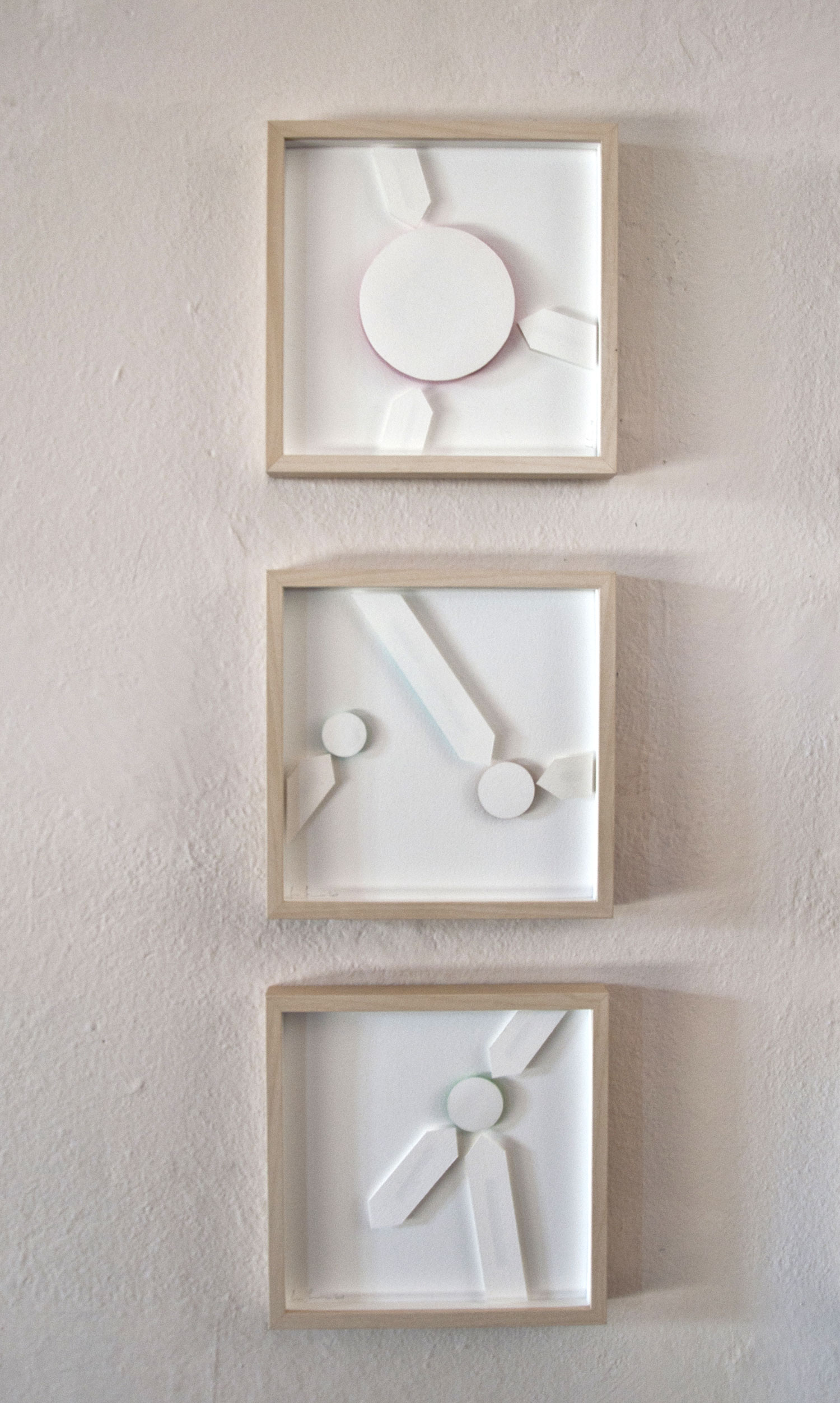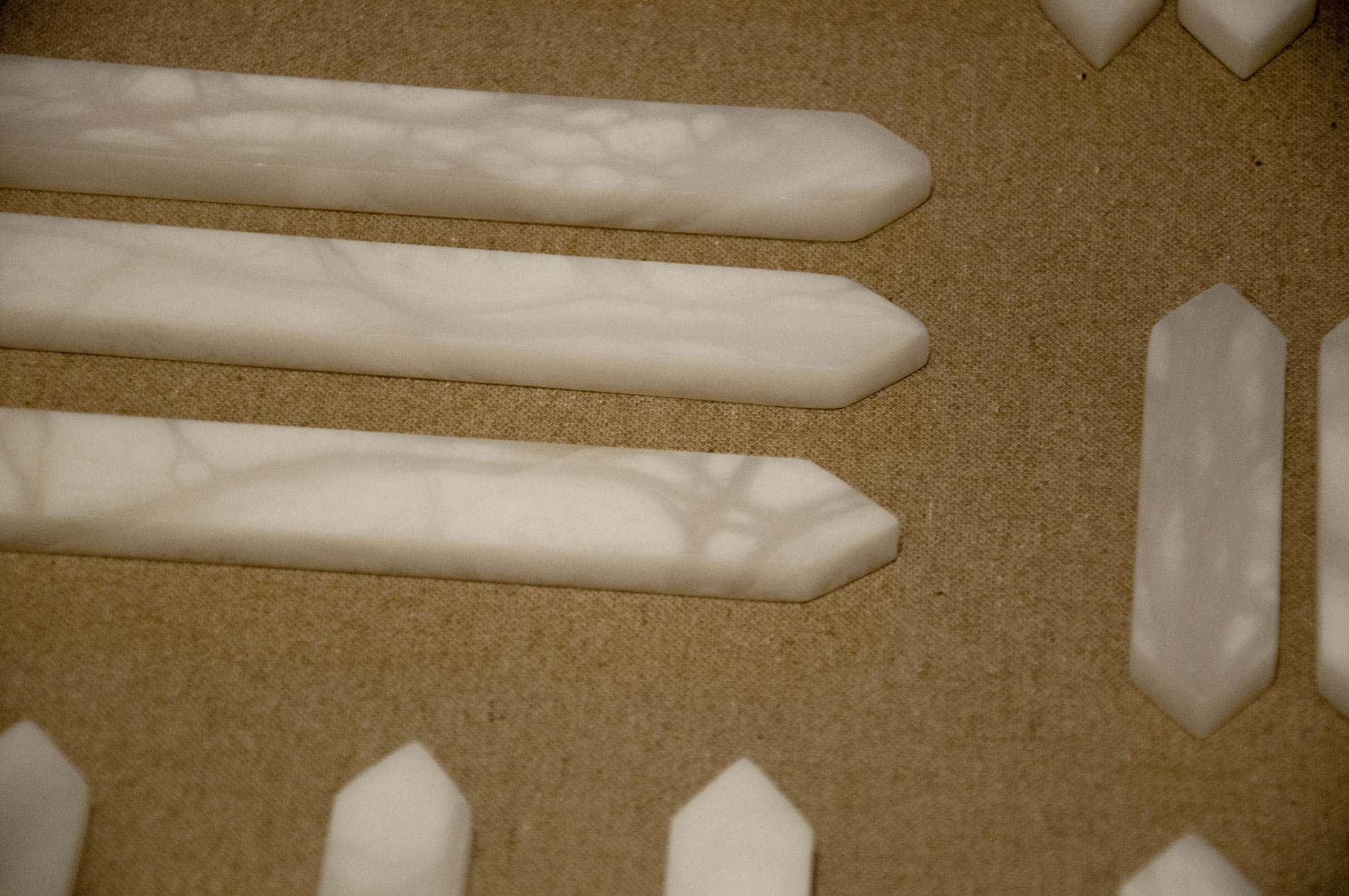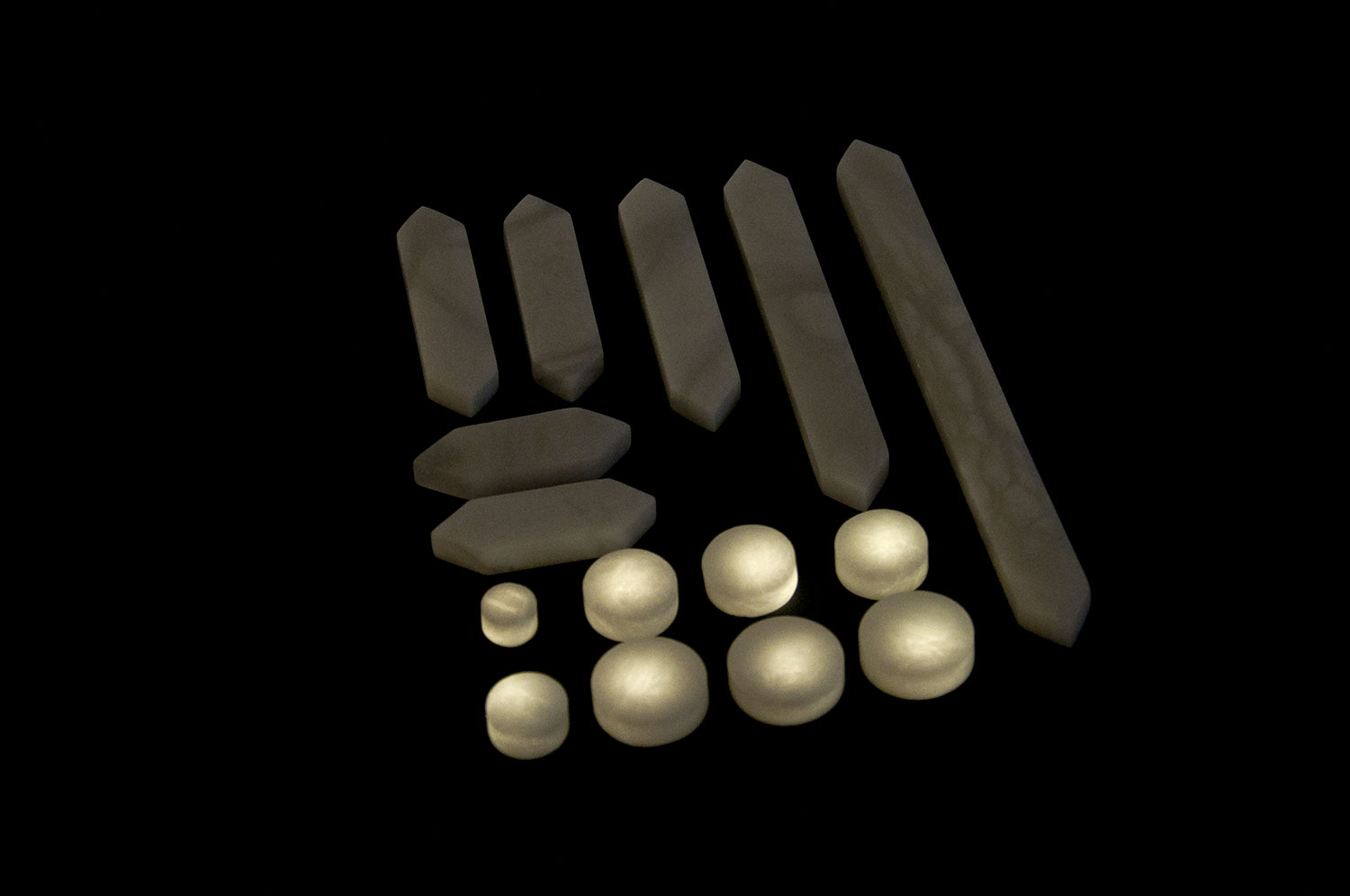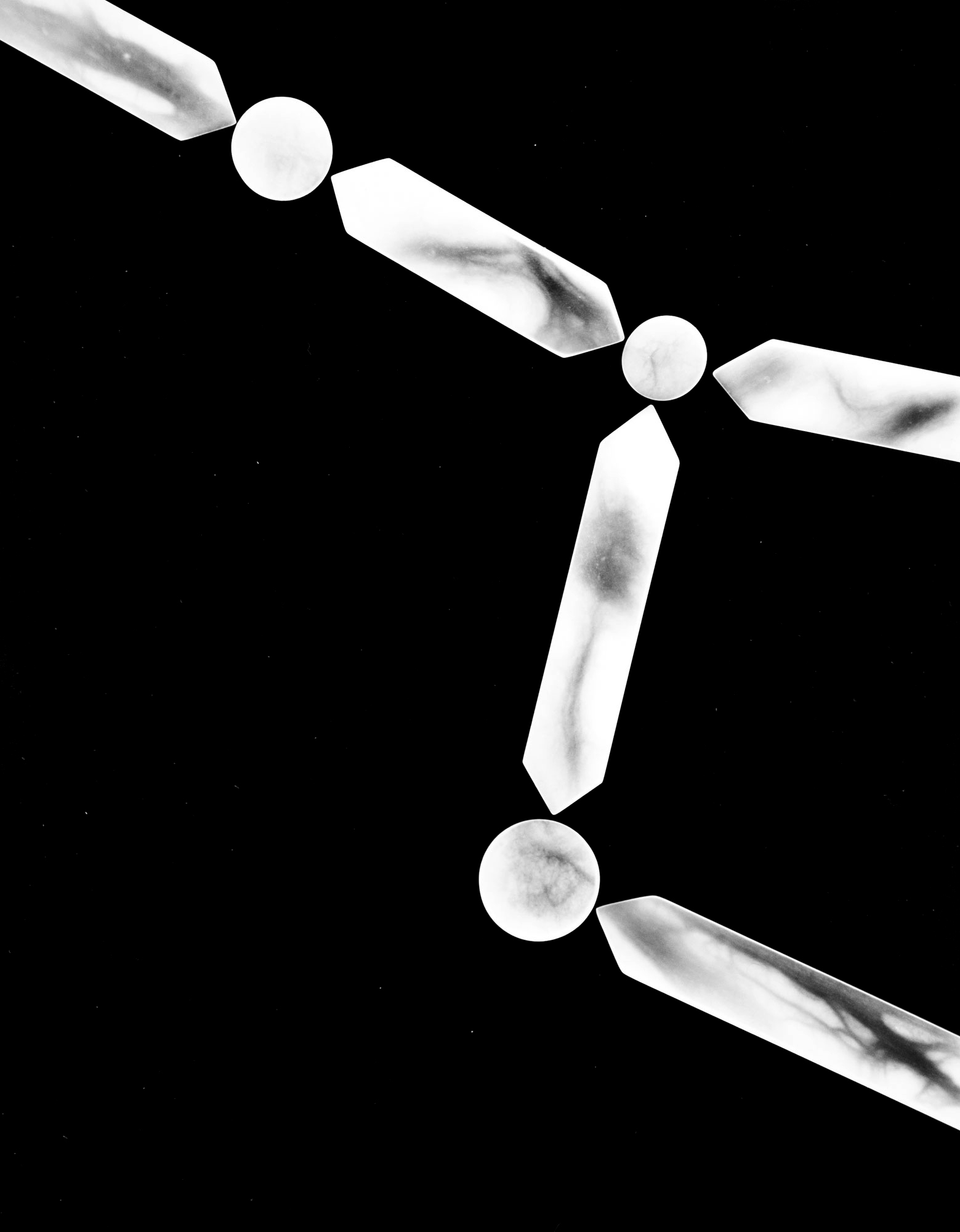
Progetto Costellazioni
chapter #10

KHÀOS/ORDER/DISPOSE, INSTALLAZIONI, INTERAZIONI E ALABASTRI
Alessandro Marzetti and Luca Serasini
December 15th, 2018 – January 20th, 2019 – Volterra (PI)
from an idea of the Department of Culture of the Municipality of Volterra
Edited by Carlo Alberto Arzelà
an exhibition created by the cultural association Cantiere Nuovo
in collaboration with the Collettivo Distillerie
with the Patronage of the Tuscany Region
Palazzo dei Priori, Volterra

[EN]
The exhibition, curated by Carlo Alberto Arzelà, ideated by the municipality of Volterra with the patronage of the Tuscany region, and is made by the cultural association Cantiere Nuovo in collaboration with the Collettivo Distillerie. Inspired by the field of astronomy, the aim of the project is to “reactivate” an emotion, to the meaning of constellations redrawing them in Earth, making them recognizable again to the eye and the human spirit, and bringing the visitor back in time to the first moments, to the “birth” of the universe.
Two artists for different languages and materials used (wood and paper for Serasini, alabaster for Marzetti) interpenetrate in a journey that, starting from the Big Bang, takes the visitor to reflect, as well as on the development of the universe, even on human condition. Between art and craft, the alabaster sculptures of Marzetti evoke arcane and primordial symbols, essential signs present in each culture whether it be Western or Eastern. Suspended between empty and full, his sculptures greet the viewer into an enchanted and silent atmosphere interfacing with large sculptures and drawings and reliefs of Serasini as between parallel worlds, among them away, but in temporal communication.
Serasini takes up the walls and the central parts of the two halls of the exhibition space with three large installations which demonstrate that many stages of life in the universe: the artist thus brings into an interior of medieval origin the language of Land Art combined with the figurative synthesis of constellations in simple elements such as discs and lines.
In the first installation (Kháos) lines and discs that represent the constellations are grouped in a confused way to represent the beginning of creation, the Big Bang, but they find an order in the second installation, in which items seem “ready to use “(Order). Finally “Dispose” is the conclusion of the cycle, a large interactive installation that takes up an entire room, where Serasini distributes the lines and disks to make up the Big Dipper asterism (within the constellation Ursa Major) while Marzetti compose its elements in a big star in Alabaster.
The interaction of the installation is ensured by visitors who, walking over the stars, they will discover, through some recorded voices, 7 short stories told by Saptarishi, the seven sages that were present at time of Creation and representing each, in Indian mythology, the stars of the Big Dipper.
The stories, taken from verses in the RgVeda (hymns of knowledge) and the Satapatha Brahmana (Brahmana of one hundred parts) two of the most important texts composed in Vedic Sanskrit, narrate the birth of the universe and its order, as well as countless formulas needed to Vedic priests to perform correctly the sacrifices to the gods.
The myth is a recurring theme in the work of Serasini. In past installations he always went in search of the origins of the constellations by concerning the ancient legends of the peoples of the Mediterranean basin. With this exhibition he begins to discover the fascinating world of ancient India.
[IT]
La mostra, a cura di Carlo Alberto Arzelà, nasce da un’idea dell’Assessorato alla Cultura del Comune di Volterra con il patrocinio della Regione Toscana, ed è realizzata dall’associazione culturale Cantiere Nuovo in collaborazione con il Collettivo Distillerie. Traendo spunto dal campo dell’astronomia, lo scopo del progetto è quello di “riattivare” un interesse, un’emozione, verso il significato delle costellazioni ridisegnandole in terra, rendendole così di nuovo riconoscibili all’occhio e allo spirito umano, e portando il visitatore indietro nel tempo fino ai primi momenti del nostro Universo, fino alla “nascita” delle stesse per come le conosciamo.
Due gli artisti per diversi linguaggi e materiali usati (il legno e la carta per Serasini, l’alabastro per Marzetti) che si compenetrano in un viaggio che, a partire dal Big Bang, porta il visitatore a riflettere, oltre che sullo sviluppo dell’Universo, anche sulla condizione dell’essere umano. Tra arte e artigianato, le sculture in alabastro di Marzetti rievocano simboli arcani e primordiali, segni essenziali presenti in ogni cultura sia essa occidentale o orientale. Sospese tra vuoti e pieni, le sue sculture accolgono lo spettatore in un’atmosfera silenziosa ed incantata: si interfacciano con le grandi sculture e con i disegni e rilievi di Serasini come tra mondi paralleli, tra di loro lontani, ma in comunicazione temporale.
Serasini occupa le pareti e le parti centrali delle due sale dello spazio espositivo con tre grandi installazioni in cui sono rappresentate altrettante fasi della vita dell’Universo: l’artista porta così in un interno di origine medievale il linguaggio della Land Art unito alla sintesi figurativa delle costellazioni in elementi semplici quali dischi e linee. Nella prima installazione (Kháos) le linee e i dischi che rappresentano le costellazioni sono raggruppate in modo confuso a rappresentare l’inizio della creazione, del Big Bang, ma trovano un ordine nella seconda installazione, in cui gli elementi sembrano “pronti all’uso” (Order). Infine Dispose è la conclusione del ciclo, una grande installazione interattiva che occupa un’intera sala, in cui Serasini distribuisce le linee e i dischi per comporre l’asterismo del Grande Carro(all’interno della costellazione dell’Orsa Maggiore) mentre Marzetti “compone” i suoi elementi in una grande stella in alabastro.
L’interazione dell’installazione è assicurata dai visitatori che, camminando sopra le stelle, scopriranno, attraverso alcune voci registrate, 7 brevi storie raccontate dai Saptarishi, i Sette Saggi presenti al momento della creazione che rappresentano ciascuno, nella mitologia indiana, le stelle del Grande Carro.
Le storie, tratte dai versi del RgVeda (inni della conoscenza) e dal Satapatha Brahmana (dei cento cammini) due tra i più importanti testi composti in sanscrito vedico, narrano della nascita dell’universo e del suo ordine, oltre a innumerevoli formule necessarie ai sacerdoti vedici per compiere in modo giusto i sacrifici agli Dei.
Il mito infatti è un tema ricorrente nei lavori di Serasini. Nelle passate installazioni è sempre andato alla ricerca delle origini delle costellazioni interessandosi alle leggende antiche dei popoli del bacino del Mediterraneo. Con questa esposizione inizia a scoprire il suggestivo mondo spirituale dell’India antica.
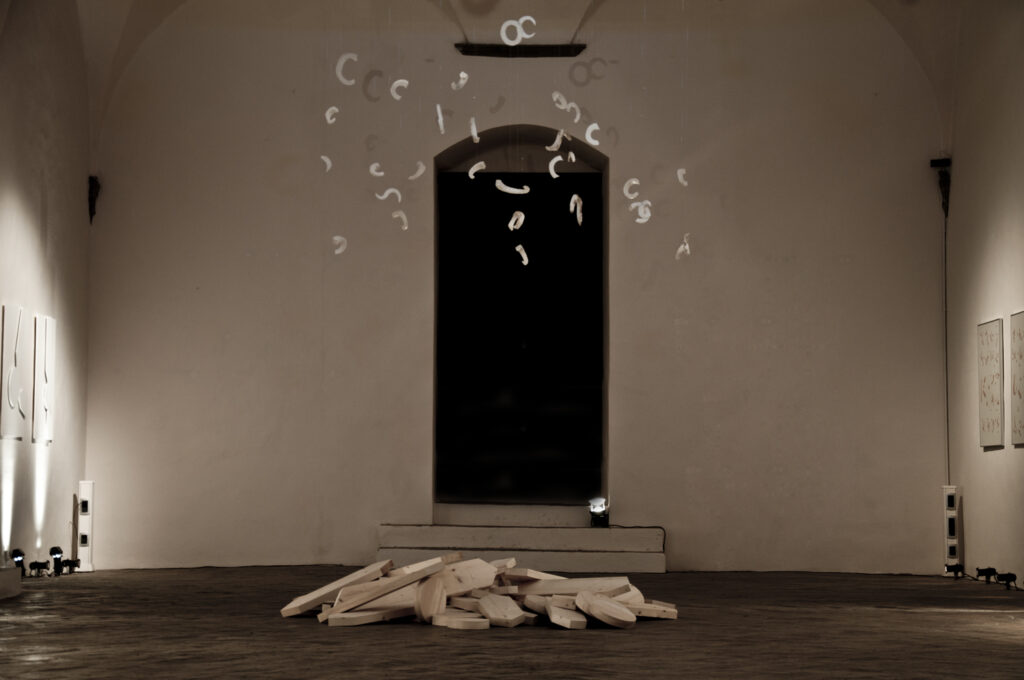
wood, variable dimensions

wood, variable dimensions

wood, Led, sensors, microPC, audio speakers
7 x 3 m
2018
ARTWORKS

wood and acylic
100 x 70 cm each
2018

stikers on canvas
103 x 70 cm
2018

pen on watercolor paper
100 x 70 each
2018

cut-out paper, glue and acrylic on paper
21 pieces, 25 x 25 cm each
2018-21


with Alessandro Marzetti & IMAGO Pisa
Together with sculptor Alessandro Marzetti Luca Serasini made this constellations elements with the caratheristic stone of Volterra. Then Serasini added light and I used these elements also to make his first rayograms printed at Imago cultural association in Pisa.
